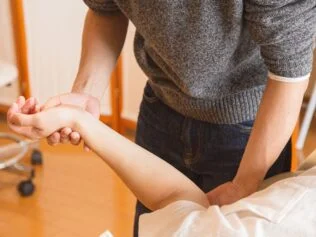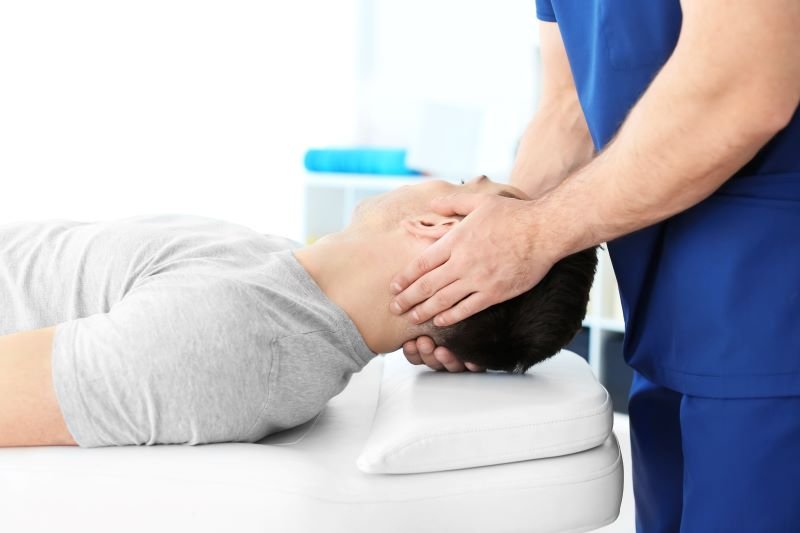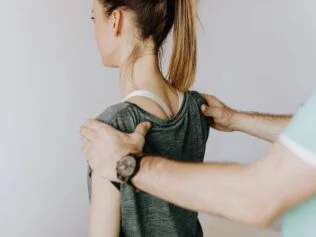
Osteopathy
What is Manual Osteopathy?
Manual Osteopathy is a holistic approach to healthcare that emphasizes the treatment of the entire body, focusing on the musculoskeletal system including facia, bones, muscles, and joints.
Osteopaths believe that the body has a natural ability to heal itself, and by improving structural balance and function, overall health can be enhanced.Osteopathic treatments include hands-on techniques such as stretching, gentle pressure, and resistance to improve mobility, range of motion, relieve tension, and encourage the body’s healing processes. It aims to restore balance to the body, which can help with a variety of conditions, including back pain, joint issues, and even headaches and digestive problems. The goal is not only to address symptoms but to improve overall well-being by restoring optimal function across all body systems.
Visceral Osteopathy
Something unique about Manual Osteopathy is the Visceral aspect. It also looks at the mobility and treatment of internal organs (viscera) like the digestive, respiratory, and reproductive systems. Manuel Osteopaths believe that dysfunction in these organs can affect the musculoskeletal system and vice versa. By applying gentle manipulative techniques to the abdomen or thoracic area, Manuel Osteopaths aim to enhance the mobility and function of the organs, reduce any restrictions, and improve overall circulation and balance within the body. This approach can be helpful for conditions like irritable bowel syndrome (IBS), acid reflux, and
menstrual pain.


Cranial Osteopathy
Manual Osteopaths also focus on the subtle and refined technique that focuses on the movement and health of the bones in the skull (cranium) and their relationship to the spine and the effect it has on the cranial nerves and the rest of the body. It is based on the idea that there is a rhythmic, involuntary motion within the cranial bones and cerebrospinal fluid that can be palpated by a trained practitioner. Dysfunctions in this cranial rhythm can lead to various physical and emotional health issues. Cranial osteopathy is often used to treat conditions like headaches,migraines, chronic pain, and even issues related to stress or trauma. It is also popular for treating sleep disturbances and has a calming effect on the mind, body, spirit.
Both visceral and cranial osteopathy are integral parts of osteopathy’s holistic view of the body, recognizing the interconnectedness of all systems and focusing on enhancing the body’s innate ability to self-regulate and heal.
Osteopathic Techniques
1.Soft Tissue Therapy (STT) – Rhythmic stretching, kneading, and deep pressure to relieve tension and boost circulation.
2.Muscle Energy Technique (MET) – Uses patient’s muscle contractions against resistance to lengthen tight muscles and increase joint mobility.
3.Joint Mobilizations – Gentle, repetitive movements to restore joint motion and function.
4.Myofascial Release (MFR) – Sustained pressure to release fascial adhesions and improve tissue mobility.
5.Craniosacral Therapy (CST) – Light touch to balance the craniosacral system and support the nervous system.
6.Visceral Manipulation – Gentle techniques to enhance mobility of internal organs and their integration with surrounding tissues.
7.Strain-Counterstrain – Positions the body to reduce pain and reset tissue tension.
8.Proprioceptive Neuromuscular Facilitation (PNF) – Combines muscle activation and stretching to improve flexibility and strength.
Assessment & Clinical Skills
1.Postural & Gait Analysis – Evaluates alignment, movement patterns, and imbalances.
2.Orthopedic Testing – Manual tests to assess joint function and mobility.
3.Palpation Skills – Sensitive touch to detect tissue changes, tone, and motion.
4.Anatomical & Biomechanical Knowledge – Informs accurate diagnosis and effective treatment.
5.Corrective Exercise – Tailored exercises to enhance posture, stability, and movement.
6.Patient Education – Guidance on exercises, posture, breathing, and lifestyle habits.
7.Holistic Case Taking – Addresses physical, mental, and emotional factors in care planning.
CWR Health Clinics
At CWR Health Clinics, we use a multidisciplinary approach with Traditional and Complementary Health Care Practitioners to offer our patients optimal health and wellness. Together, our team of professionals offers one of the best multidisciplinary health clinics for Oshawa, Whitby, Courtice, Ajax, Brooklin, Port Perry, Pickering, and Bowmanville.
We are located at 17 Brock Street West in Oshawa, only steps from our old location at Adelaide and Simcoe. We have plenty of free parking on the West side of our office. Let our caring compassionate and skillful practitioners help you reach your Health goals.

